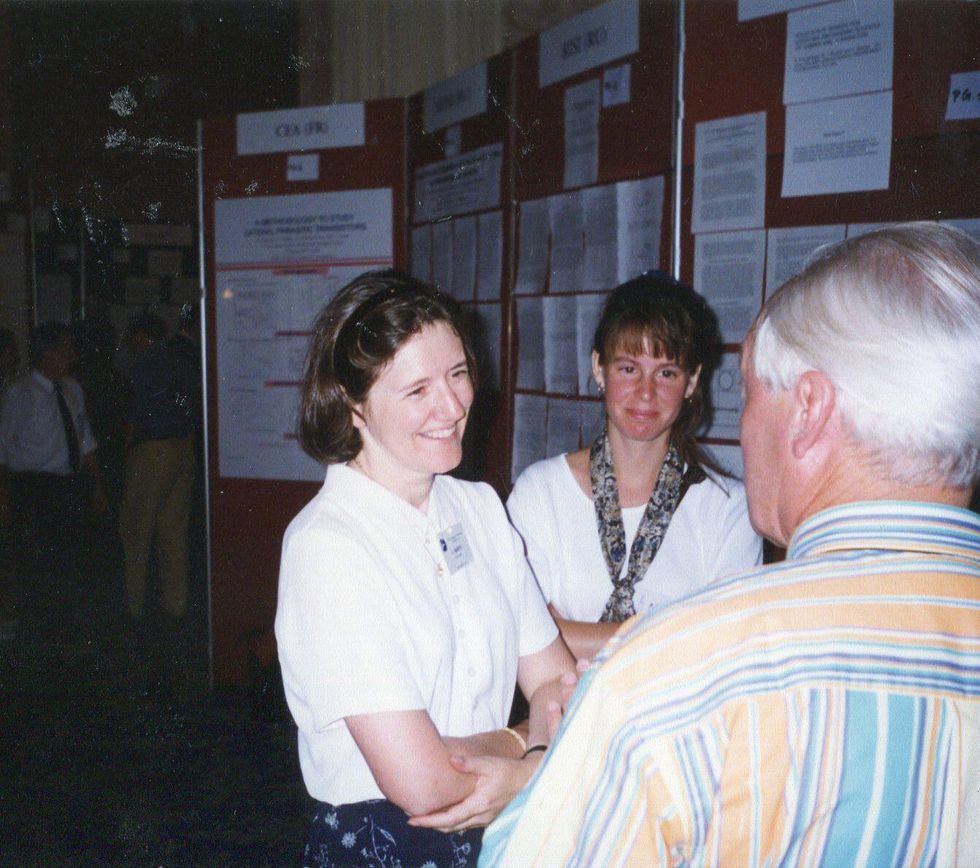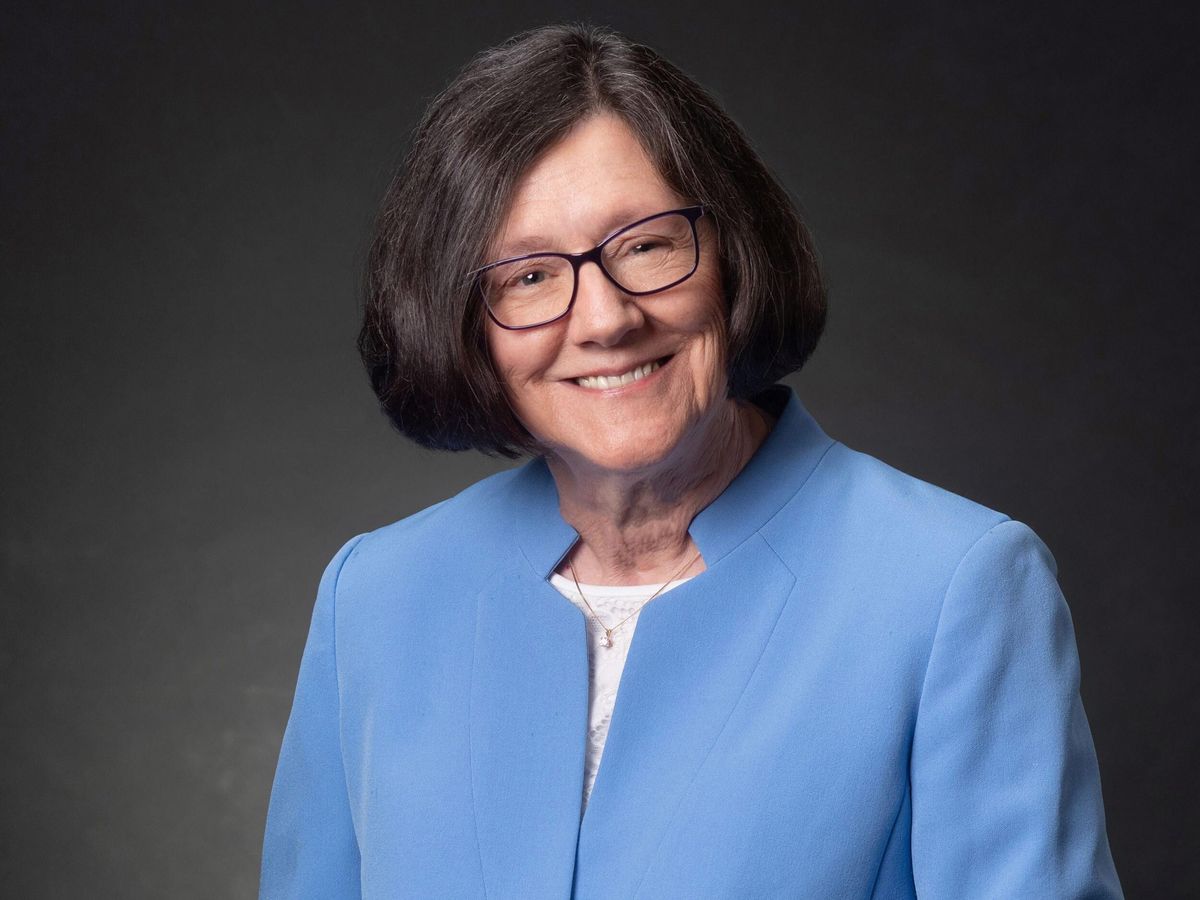Janet Barth spent most of her career at the Goddard Space Flight Center, in Greenbelt, Md.—which put her in the middle of some of NASA’s most exciting projects of the past 40 years.
She joined the center as a co-op student and retired in 2014 as chief of its electrical engineering division. She had a hand in Hubble Space Telescope servicing missions, launching the Lunar Reconnaissance Orbiter and the Magnetospheric Multiscale mission, and developing the James Webb Space Telescope.
About Janet Barth
Employer: Miller Engineering and Research Corp.
Title: Advisory board member
Member grade: Life Fellow
Alma mater: University of Maryland in College Park
Barth, an IEEE Life Fellow, conducted pioneering work in analyzing the effects of cosmic rays and solar radiation on spacecraft observatories. Her tools and techniques are still used today. She also helped develop science requirements for NASA’s Living With a Star program, which studies the sun, magnetospheres, and planetary systems.
For her work, Barth was honored with this year’s IEEE Marie Sklodowska-Curie Award for “leadership of and contributions to the advancement of the design, building, deployment, and operation of capable, robust space systems.”
“I still tear up just thinking about it,” Barth says. “Receiving this award is humbling. Everyone at IEEE and Goddard who I worked with owns a piece of this award.”
From co-op hire to chief of NASA’s EE division
Barth initially attended the University of Michigan in Ann Arbor, to pursue a degree in biology, but she soon realized that it wasn’t a good fit for her. She transferred to the University of Maryland in College Park, and changed her major to applied mathematics.
She was accepted for a co-op position in 1978 at the Goddard center, which is about 9 kilometers from the university. Co-op jobs allow students to work at a company and gain experience while pursuing their degree.
“I was excited about using my analysis and math skills to enable new science at Goddard,” she says. She conducted research on radiation environments and their effects on electronic systems.
Goddard hired her after she graduated as a radiation and hardness assurance engineer. She helped ensure that the electronics and materials in space systems would perform as designed after being exposed to radiation in space.
Because of her expertise in space radiation, George Withbroe, director of the NASA Solar-Terrestrial Physics program (now its Heliophysics Division), asked her in 1999 to help write a funding proposal for a program he wanted to launch—which became Living With a Star. It received US $2 billion from the U.S. Congress and launched in 2001.
During her 12 years with the program, Barth helped write the architecture document, which she says became a seminal publication for the field of heliophysics (the study of the sun and how it influences space). The document outlines the program’s goals and objectives.
In 2001 she was selected to be project manager for a NASA test bed that aimed to understand how spacecraft are affected by their environment. The test bed, which collected data from space to predict how radiation might impact NASA missions, successfully completed its mission in 2020.
Barth reached the next rung on her career ladder in 2002, when she became one of the first female associate branch heads of engineering at Goddard. At the space center’s Flight Data Systems and Radiation Effects Branch, she led a team of engineers who designed flight computers and storage systems. Although it was a steep learning curve for her, she says, she enjoyed it. Three years later, she was heading the branch.
She got another promotion, in 2010, to chief of the electrical engineering division. As the Goddard Engineering Directorate’s first female division chief, she led a team of 270 employees who designed, built, and tested electronics and electrical systems for NASA instruments and spacecraft.

Working on the James Webb Space Telescope
Throughout her career, Barth was involved in the development of the Webb space telescope. Whenever she thought that she was done with the massive project, she says with a laugh, her path would “intersect with Webb again.”
She first encountered the Webb project in the late 1990s, when she was asked to be on the initial study team for the telescope.
She wrote its space-environment specifications. After they were published in 1998, however, the team realized that there were several complex problems to solve with the telescope’s detectors. The Goddard team supported Matt Greenhouse, John C. Mather, and other engineers to work on the tricky issues. Greenhouse is a project scientist for the telescope’s science instrument payload. Mather won the 2006 Nobel Prize in Physics for discoveries supporting the Big Bang model.
The Webb’s detectors absorb photons—light from far-away galaxies, stars, and planets—and convert them into electronic voltages. Barth and her team worked with Greenhouse and Mather to verify that the detectors would work while exposed to the radiation environment at the L2 Lagrangian point, one of the positions in space where human-sent objects tend to stay put.
Years later, when Barth was heading the Flight Data Systems and Radiation Effects branch, she oversaw the development of the telescope’s instrument command and data handling systems. Because of her important role, Barth’s name was written on the telescope’s instrument ICDH flight box.
When she became chief of Goddard’s electrical engineering division, she was assigned to the technical review panel for the telescope.
“At that point,” she says, “we focused on the mechanics of deployment and the risks that came with not being able to fully test it in the environment it would be launched and deployed in.”
She served on that panel until she retired. In 2019, five years after retiring, she joined the Miller Engineering and Research Corp. advisory board. The company, based in Pasadena, Md., manufactures parts for aerospace and aviation organizations.
“I really like the ethics of the company. They service science missions and crewed missions,” Barth says. “I went back to my roots, and that’s been really rewarding.”
The best things about being an IEEE member
Barth and her husband, Douglas, who is also an engineer, joined IEEE in 1989. She says they enjoy belonging to a “unique peer group.” She especially likes attending IEEE conferences, having access to journals, and being able to take continuing education courses and workshops, she says.
“I stay up to date on the advancements in science and engineering,” she says, “and going to conferences keeps me inspired and motivated in what I do.” The networking opportunities are “terrific,” she adds, and she’s been able to meet people from just about all engineering industries.
An active IEEE volunteer for more than 20 years, she is executive chairwoman of the IEEE Nuclear and Plasma Sciences Society’s Radiation Effects Steering Group, and she served as 2013–2014 president of the IEEE Nuclear and Plasma Sciences Society. She also is an associate editor for IEEE Transactions on Nuclear Science.
“IEEE has definitely benefited my career,” she says. “There’s no doubt about that.”
- Leading the Way for More LGBTQ Inclusivity in STEM ›
- A Serial Entrepreneur Shares Lessons Learned on His Road to Success ›
- One Way to Stop the Social Spread of Disinformation ›
- Rory Cooper’s Wheelchair Tech Makes the World More Accessible - IEEE Spectrum ›
- This Nobel Laureate Paved the Way for High-Intensity Lasers - IEEE Spectrum ›
Joanna Goodrich is the associate editor of The Institute, covering the work and accomplishments of IEEE members and IEEE and technology-related events. She has a master's degree in health communications from Rutgers University, in New Brunswick, N.J.



